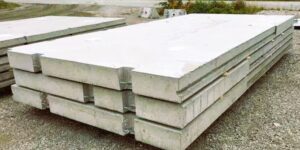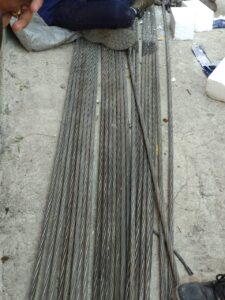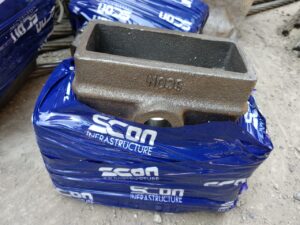- abaashishb7
- March 23, 2024
- 6:40 pm
- No Comments
RCC PRESTRESSED SLAB FOR MODERN CONSTRUCTION

RCC PRESTRESSED SLAB
In the ever-evolving world of construction, innovation drives the quest for stronger,
more efficient structures. Reinforced Concrete (RCC) has been a cornerstone of the
industry for its durability, but the evolution of Prestressed Concrete (PC) has
revolutionized how we build. Among these advancements, RCC Prestressed Slabs
stand out as a symbol of modern construction, offering unparalleled strength and
versatility. This article explores the world of RCC Prestress Slabs, their construction,
benefits, applications, and design considerations.
* Understanding RCC Prestressed Slabs
RCC Prestressed Slabs are a type of concrete slab where internal stresses are
introduced to counteract the external loads the slab will experience over its lifetime.
Unlike traditional RCC slabs, which rely solely on the concrete’s compressive strength
and reinforcing steel, prestressed slabs are engineered to have internal stresses that
help resist tensile forces, resulting in a structure that is more resistant to bending and
cracking.
RCC PRESTRESSED SLAB
* Prestressing Techniques
* There are two primary methods of prestressing:
A:- Pre-Tensioning: In this technique, high-strength steel tendons are stretched
between anchorages before the concrete is poured. Once the concrete cures, the
tendons are released, transferring their tension to the concrete.
B:- Post-Tensioning: Similar to post-tensioned slabs, post-tensioning in prestressed
slabs involves placing the tendons within the concrete after it has hardened to a
certain strength. Hydraulic jacks then tension the tendons, creating compression
within the concrete.
RCC PRESTRESSED SLAB
* Benefits of Prestressed Slabs
* The adoption of RCC Prestressed Slabs offers a multitude of benefits to construction
projects:
1:-Increased Load Capacity: The internal stresses in prestressed slabs allow for greater
load-bearing capacity, making them suitable for heavy industrial applications and
high-rise buildings.
2:- Improved Crack Control: Prestressed slabs experience significantly fewer cracks
compared to traditional slabs, enhancing their long-term durability.
3:- Spanning Longer Distances: Prestressed slabs can span longer distances between
supports, reducing the need for columns and creating more open, flexible spaces.
4:- Thinner Slabs: Due to their enhanced strength, prestressed slabs can be designed to
be thinner, saving on materials and reducing weight.
5:- Reduced Maintenance: The durability and resistance to cracking mean that
prestressed slabs require less maintenance over their lifespan, reducing long-term
costs.
* Design Considerations for RCC Prestressed Slabs
* Designing RCC Prestressed Slabs requires careful consideration of various factors:
1:- Tendon Layout and Design: The arrangement of tendons and their profile must be
meticulously planned to ensure optimal load distribution and structural integrity.
2:- End Block Design: Proper detailing of end blocks and anchorages is crucial to
transfer the prestressing forces efficiently.
3:- Curvature and Camber: Prestressed slabs may exhibit camber or curvature due to
the prestressing forces. Designers must account for this to achieve the desired
finished floor elevation.
4:- Stressing Sequence: Whether pre-tensioning or post-tensioning, the sequence of
stressing operations is critical to avoid excessive deflection and ensure even load
distribution.
5:- Construction Joints: Careful planning of construction joints is essential to prevent
unwanted cracking and maintain the structural integrity of the slab.
RCC PRESTRESSED SLAB






